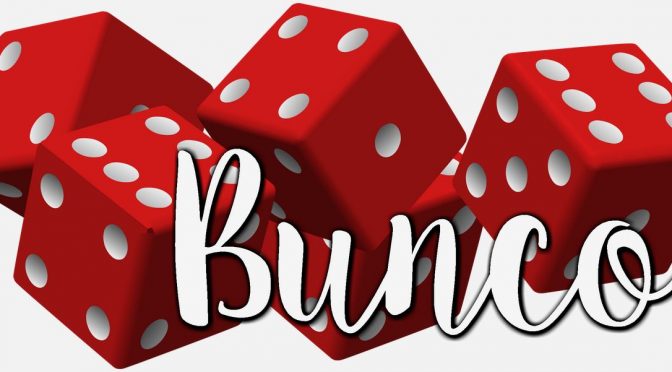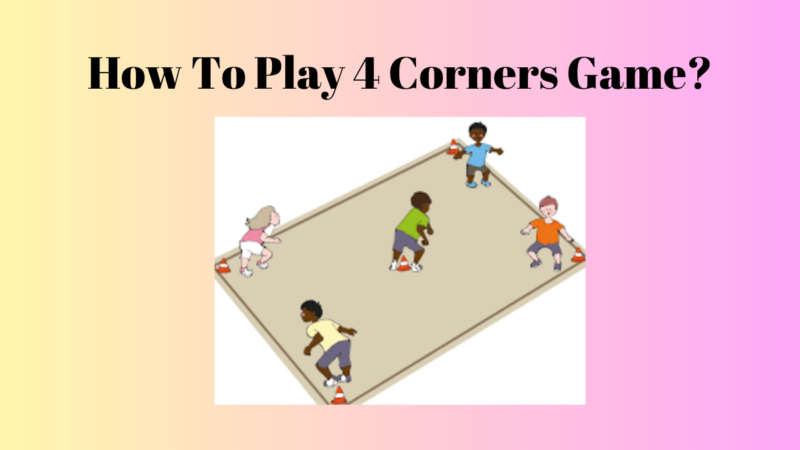HOW TO PLAY BUNCO?

BUNCO – The dice game known as “Bunco” has been played at parties and other social events since the 1800s. There are some fundamental principles to abide by to enjoy the game, even though players love adding their interpretations to the regulations.
The Bunco Game’s Goal
The dice are rolled, and the players tally their “wins” or “Buncos.” The player with the greatest number of “wins” and “Buncos” after play is declared the winner. Sets of the game, which each have six rounds, are played. Typically, teams played between 2 and 4 total sets.
Bunco Rules & Scoresheet Printable
Searching for a PDF with the freely printable Bunco game rules? To download and print the Bunco game rules and scoresheets, simply click the image below. A cheat sheet of the rules is useful when playing, especially for brand-new players. If you need assistance with the download, you can visit a useful Adobe guide.
Setup for a Bunco games
12 people usually play the basic game of bunco. Four tables will have three individuals each seated at them, with one set serving as the “head table.” The following should be placed on each table:
- 3 dice
- 4 scoresheets, 1 for each participant
- Two pencils.
- Two notepads, one for every team
- 1 scratch pad (only for the head table) for the scorekeeper
- 1 bell (just for the head table)
- 1 fuzzy die (just for the head table)
How to Start Playing Bunco
Choosing the players who will sit at the head of the table is the first step.
- Four out of the twelve score sheets have a star drawn on the back. The other players shouldn’t be able to tell which sheets the constellations were drawn on by doing this.
- Each player will choose a score sheet from the stack.
- The head table will be occupied by all four players who each grabbed a sheet with a star on it.
- The remaining participants will create teams and sit at the other tables. Team members ought to sit across from one another, not next to one another.
- Apart from the head table, every table must have a predefined number (for example, table two, table three).
- Each table’s scorekeeper will be chosen by the players there.
- Have each participant choose a score sheet. The top table is reserved for those who choose to mark their sheet with a star. The seats at each of the tables are chosen by every other player. Teammates are the players seated across from one another.
- At each table, choose a player to serve as the scorekeeper.
Twelve Players Not Present
You can divide the total number of participants by three if there are fewer than 12 present. You need at least three tables to play, but each table does not need to have four players at it. If you’re playing with over twelve players, on the other hand, you can add additional tables with a maximum of four participants each or even organize a customized Bunco tournament.
Playing with an Unusual Amount of Players
Using a “ghost” allows you to play with a strange amount of players. The ghost’s partner throws the dice and records the results for the ghost.
The Basics: Bunco Rules to Play game
To play bunco, abide by the following guidelines:
- When the head table scorekeeper rings the bell, the play begins. The head table is in control throughout the game.
- Each player rolls all three dice on their table once, writing their results on their score sheets as they go.
- Players strive to roll a “1” during the opening round.
- For each “1” rolled, points are awarded. A roll of 1-1-4, for instance, would result in two points being awarded because the number “1” was rolled twice.
- The player obtains a “Bunco” and receives 21 points if all three dice are a “1”. The player must shout “Bunco” to score.
- The 21 points are only awarded to the person who rolled the Bunco.
- The player receives five points if they roll the die and come up with three non-“1″s of a type. For instance, in round one, a roll of 4-4-4 would result in 5 points.
- The player’s turn is completed and the dice are passed to the following player seated clockwise if the person rolls and scores nothing.
- The round will end when the head scorekeeper rings the bell after a team at the top of the table rolls a Bunco game and scores 21 and cries “Game.”
- It should be noted that all other tables should continue playing until the head dealer rings the bell, regardless of whether the group playing at the table in question hits 21 or a Bunco. Up until the head table calls the round, the tables ought to keep gaining points.
- When the bell rings, players at each of the other tables may conclude their turn and add the results to their scoresheet.
- The players inspect their score sheets when the round is over:
- A player marks a “W” on the score sheet if their team won the round.
- A player marks a “L” on the score sheet if their team lost the round.
- Each of the four players will compete in a “roll-off” if the score is tied.
- The number for each round will determine how the participants roll the die; for example, a two in the second round, a three in round three, and so on.
- Before passing the die to the following player, the table scorekeeper rolls until they fail to score.
- The total is added up when each of the four has rolled & scored, and the team with the greatest number of points is declared the winner. In the event of a tie, the roll-off process continues until one team prevails.
The teams will now alternate among the tables in the following order:
- While the losing team is moved to table two, the victorious team remains at the head table. One member from the victorious team will shift to the next chair as the team breaks apart.
- The head table’s losing team moves to table two.
- The victorious team from table two moves to the leader’s table and forms new teams.
- The victorious team from table three transfers to the other table two and reorganizes.
- The losing team from table two switches tables and reorganizes.
- The losing team from table three stays put but creates new teams with new players present.
- Round two starts after the teams at all the tables elect a new scorekeeper.
- Except for the desired die’s number changing, every next turn is played the same way. Players must roll a two in round two. Players are going to roll a three in round three, and so forth.
The Bunco Game is over
The scorekeepers should evaluate the scoresheets to identify the winning team once the players have elected to conclude the game with the final round.
They will record the overall win and loss totals.
- The categories used for winners are decided by the players and may contain simply one winner, such as the participant with the greatest number of wins, or it may include several winners, such as the player having the greatest number of victories and the most Buncos.
- Some players award rewards to those who participated but didn’t place either the top or bottom, as well as those who had the greatest losses or the same number of wins and losses. Above all, everyone should enjoy the game so that the team may be inventive with its awards and prizes.
Rules for the Bunco game might vary.
Players can choose from a variety of Bunco versions. Typical variants include:
- Each set might have anywhere from between four and six or more rounds played.
- Each game typically has three sets, although there may be more or fewer.
- After each round, players have the option to alter how they switch between tables.
- The word “travelling” can be added, which refers to a thing like fuzzy dice, a plush toy, or a bean bag. At the start of the game, the players choose based on a predetermined die roll, which can be three of the same kind of whatever number or three of a particular number (for example, three sixes). The object is put by the player, who yells “travelling” if they roll that number. At the final stage of the game, the player who still retains the object gets the travelling reward.
- Each player may choose to contribute a certain amount, say $5, to a pot that will be used to award prizes after the game.
Bunco Video Rules
You might find it useful to show your group members a video summary of the bunco rules. When someone new joins the team or when veteran players want a refresher, this video might be quite useful. To assist everybody brush themselves up and prepare for an entertaining evening, you might want to perform it during a quick cocktail hour before the match starts.
Getting Started with Bunco
Although Bunco may appear a little challenging at first, you’ll soon discover how enjoyable and simple the game can play. Bunco is a terrific game for groups, but it can’t be played with a small number of players. Although 12 players is the optimum number, you can play plus as few as 8 players by having three tables of 3 players, and having a “ghost” at a single table. For a group event, like a girls’ night off party, bunco is a great dice game. To guarantee that everyone is having fun regardless of who gets the highest score, you can get creative with the fundamental rules by introducing variants and rewards.
CONCLUSION
In conclusion, the article has attempted to give you information about “ BUNCO”. I hope the language in this post is clear and understandable.
Frequently Asked Questions
Q1) How to play bunco?
Ans. Unless the player rolls three 1s, and this would result in a 21 (the maximum number of points conceivable), they receive one point for every 1 they roll. The game is known as a “bunco” because of this.
The player receives five points but does not complete a bunch if they roll three of the same type but they are not 1.
Q2) What is bunco?
Ans. Luck is the only skill needed to win the 12-player dice game of “Bunco”. No plan is involved, talent is not required, and it moves quickly.






